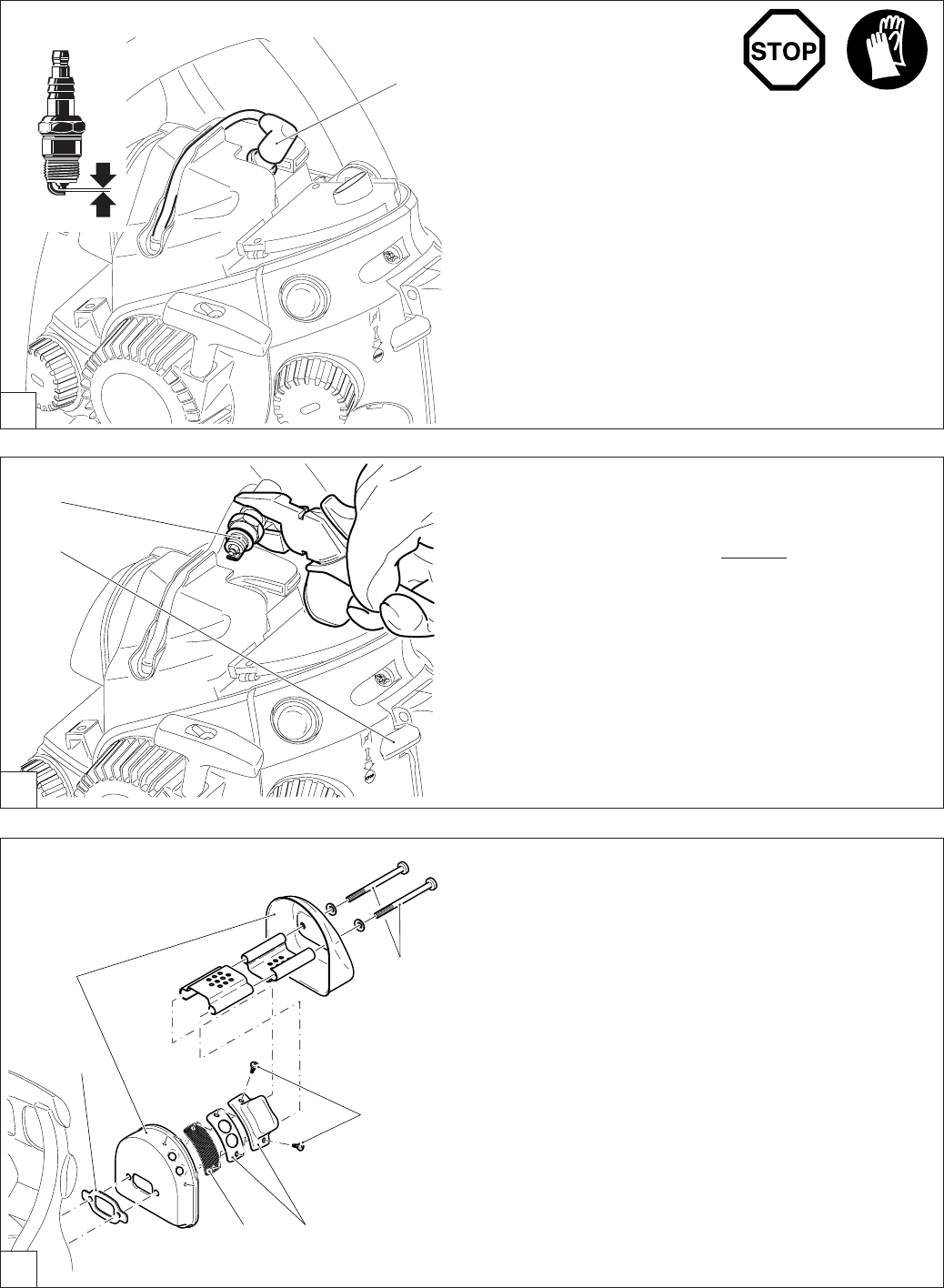
31
4
5
6
7
89
Replacing the spark plug
CAUTION:
Do not touch the spark plug or plug cap if the engine is
running (high voltage).
Switch off the engine before starting any maintenance work.
A hot engine can cause burns. Wear protective gloves!
The spark plug must be replaced in case of damage to the
insulator, electrode erosion (burn) or if the electrodes are very
dirty or oily.
Remove the cover (see "Cleaning the air lter").
Pull the plug cap (1) off the spark plug. Use only the combination
wrench supplied with the saw to remove the spark plug.
Electrode gap
The electrode gap must be .020" (0.5 mm).
1
.020 "
A
Checking the ignition spark
Press the loosened spark (2) with the ignition cable rmly con-
nected against the cylinder using insulated pliers (not near the
spark plug opening).
Press the combination switch (3) in the "I" position.
Pull the starter cable hard.
If the function is correct, an ignition spark must be visible near
the electrodes.
CAUTION: Use only the following spark plugs:
NGK BPMR 7A.
2
3
B
Replacing / cleaning the spark arrester screen
The spark arrester screen should be checked and cleaned
regularly.
Unscrew the mufer bolts (4) and carefully remove the mufer
(5).
NOTE: If the mufer gasket (6) is damaged, replace it.
Unscrew screws (7) and remove the deector (8) and the spark
arrester screen (9).
CAUTION:
Do not use sharp or pointed objects for screen cleaning. Dam-
aged or misformed screen wires may result.
Reassemble the spark arrester screen (9) and the deector (8)
and tighten the screws (7).
Tighten mufer bolts (4) to 5.6
+0.07
ft. lbs. (8.0
+0.1
Nm).
C





















